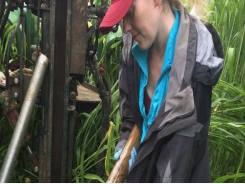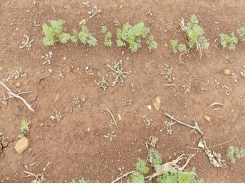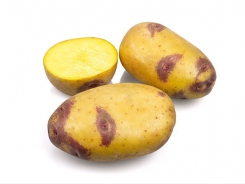Leafy crop vs fruiting crop the balancing act

When trying to predict how a crop will respond to various situations, remember that all cultivated crops originated from wild ancestors growing in competition with many other species.
Understanding how crops such as the tomato survived in the wild will help you increase yield. Photo: Bill Kerr
The mechanisms that enabled them to survive under these circumstances remain in their genetic make-up.
Growing tomatoes
Take the tomato plant, for example. In its wild state, it has to first grow through the foliage of other plants to gain access to sunlight in order to produce fruit and seeds that ensure its survival. So initially, the plant uses all its resources for the vegetative growth needed to establish this dominance.
Then it switches to flowering and produces as much seed as possible.
When we grow tomato seedlings, we protect them from the elements. This may include providing shade cloth. In addition, we want to produce as many seedlings in the growing area as possible to reduce the cost of each plant. In effect, the tomatoes grow in competition with one another, not unlike the situation in the wild with the same survival mechanisms in play.
As the seedling grower cannot tell the seedlings that they will soon be transplanted into an area of plentiful sunlight, the seedlings concentrate on vegetative growth and do not initiate flower buds.
I have often seen that tomatoes planted in 128-cavity trays will bear more fruit lower down than those from 200-cavity or 300-cavity trays. The solution is to transplant seedlings as young as is safe to do so. In this way, you will trigger the reproducitve stage sooner.
Leafy crops: a different approach
On the other hand, when planting a crop such as cabbage or lettuce, in which the vegetative growth is harvested, a wider spacing in the seed tray will not give you an advantage, except possibly producing sturdier seedlings.
At this stage, the plant is still locked into vegetative growth instead of reproduction, which is what you want.
Growing directly on the land
The same principles must be borne in mind when growing directly on the land.
A leafy crop should be stimulated with fertiliser to produce as much vegetative growth as possible, because the plant ‘knows’ that the more vegetative growth it has, the more seeds it can produce when the time comes.
A fruiting crop such as tomatoes follows the same pattern, but this works against the grower, who will not be selling tomato leaves!
Want good results? Be adaptable!
It is important to maintain a balance between providing enough leaf stimulation to sustain a good crop without compromising on fruit yield.
To complicate matters further, different varieties respond differently to this balancing act. Some have a more vigorous growth, often associated with a vigorous and healthy root system.
You should therefore fine-tune each variety in a species according to its varietal characteristics.
It is for this reason that I don’t like an inflexible recipe that does not take the environment and other factors into account.
A good farmer looks, learns and adapts to circumstances. Doing so also adds to the enjoyment of farming.
Related news
Tools

Phối trộn thức ăn chăn nuôi

Pha dung dịch thủy canh

Định mức cho tôm ăn

Phối trộn phân bón NPK

Xác định tỷ lệ tôm sống

Chuyển đổi đơn vị phân bón

Xác định công suất sục khí

Chuyển đổi đơn vị tôm

Tính diện tích nhà kính

Tính thể tích ao



 More common potato diseases
More common potato diseases  Potato tuber moth and other spud pests
Potato tuber moth and other spud pests